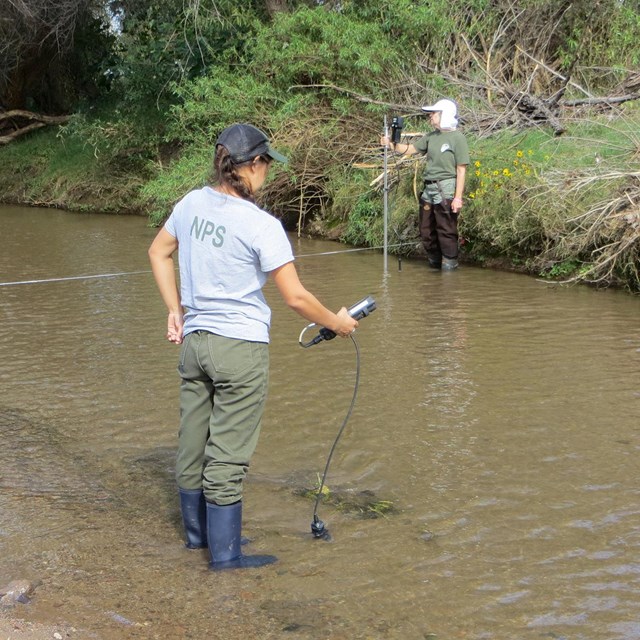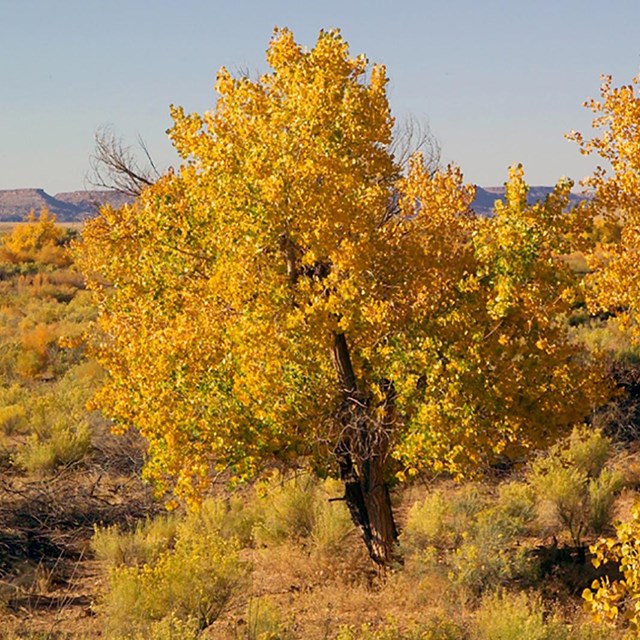Cultural Connection!
Southwest River EnvironmentsRiparian habitats occur along the edges of rivers, streams, and wetlands, as well as around other permanent or ephemeral water sources such as seeps, springs, and washes. Although they constitute less than 2% of the land area in the American Southwest, riparian habitats support the highest density and abundance of plants and animals of any habitat type, making them critical to the ecological integrity of the American Southwest. Riparian areas supply food, cover, and water, and serve as migration routes and habitat connectors, for a variety of wildlife. They also help control water pollution, reduce erosion, mitigate floods, and increase groundwater recharge. Riparian systems perform numerous ecosystem functions important to human populations, yet are one of the most endangered forest types in the United States.
Last updated: October 5, 2016


